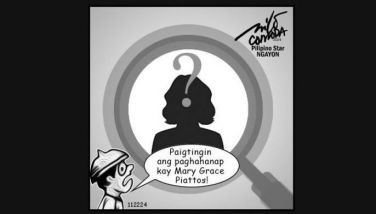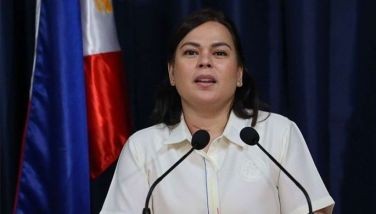A pictorial Documentary of Philippine History
CEBU, Philippines – It is said that "History repeats itself" and that "Those who don't remember the evils of the past are bound to repeat it." Indeed, historical accounts help the nation learn from its past. Of course, it's aside from the fact that such accounts can really be a vehicle for a nostalgic ride back in time.
Veteran Spanish writer and multi-awarded journalist Jose "Pepe" Rodriguez has launched his "Front Pages of Philippine History," at the Marco Polo Plaza Hotel Cebu, on November 13. The book is enthused by his love for journalism and history.
"We have to go to history to [make sense of] today and [be able to figure out] what tomorrow will be," Rodriguez believes. "There's no other way. That's why we have books, we have periodicals, and we continue writing." He adds that many of "yesterday's issues are still today's issues," citing, for instance, the rice shortage in the country that has been an issue for a long time now.
Rodriguez is fond of collecting periodicals. His book features over 200 front pages of Philippine newspapers, from his personal archive of thousands of these which he has collected in the last 25 years. He shared that the book itself is a product of serendipity. The materials were there, as if waiting to take form; and, indeed, in two years' time it took the form of a book.
The book is a visual testimony of the richness of Philippine history. It relates the nation's story spanning over 100 years, told in the front pages of newspapers in Spanish, English and Filipino. It chronicles the country's continuing saga - starting from the Spanish colonial era when the Philippines became the first republic in Asia, through the resistance movement as the United States took over the islands by virtue of the Treaty of Paris, the guerilla struggle during the Japanese occupation in World War II, the Philippine Independence and the coming of the modern age.
It also features eye-witness accounts by Filipino journalists and writers. Thus, it defines both the evolution of the country and the interesting trends of its journalism through the years. Rodriguez describes his book as a "hard copy of history, not an interpretation." It is a rich resource for researchers, historians and students.
Rodriguez also dedicates his new book to the Filipino journalists, past and present. "Journalism is the best profession to be," he declares, "because news stories are [about the] way people and events interact. In time, these interactions become the blood and strength of the race; they form its character as the nation moves towards the future." He also points out that being a journalist is not for the half-hearted - that it is a vocation.
Rodriguez was born in San Xoan de Rio, located in the northwestern region of Galicia, Spain. He married a Filipina portrait artist, Lourdes Conching, with whom he has two children, Lara Maria and Jose Francisco. He has lived in the Philippines for more than 30 years.
He was a former bureau chief for Asia and the Pacific of the International Spanish News Agency Agencia EFE and director of Instituto Cervantes.
His other books are - "Cronicas: Random Recollections of a Spanish Journalist in the Philippines" and "Philippine First Ladies Portraits." He is co-author of "Cruceiro: Spanish Galicia at Some Crossroads in Philippine History and Culture."
The publication and launch of "The Front Pages of Philippine History" was sponsored by The Manila Bulletin, one of the main sources of the historical collection in the book, through its publisher Emilio Yap III and the late Bulletin chairman Don Emiliano Yap. The book is available in bookstores nationwide.
- Latest






























